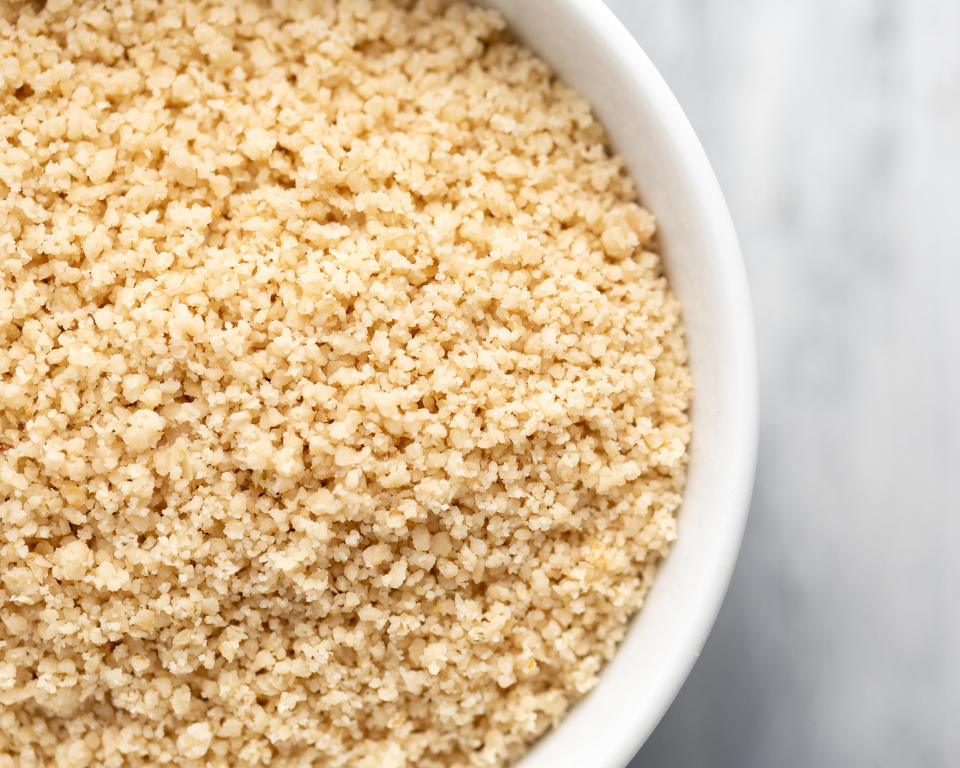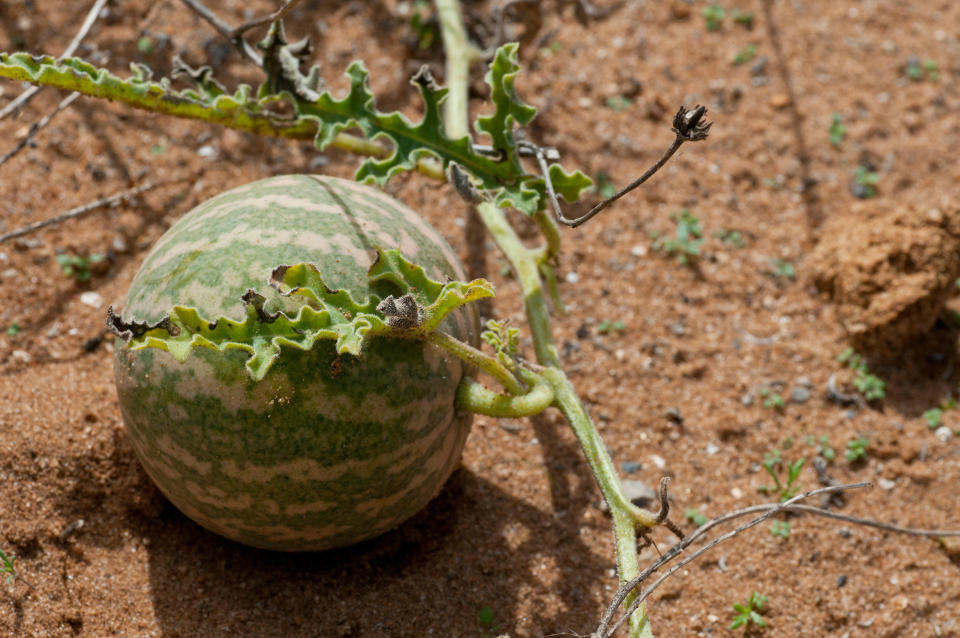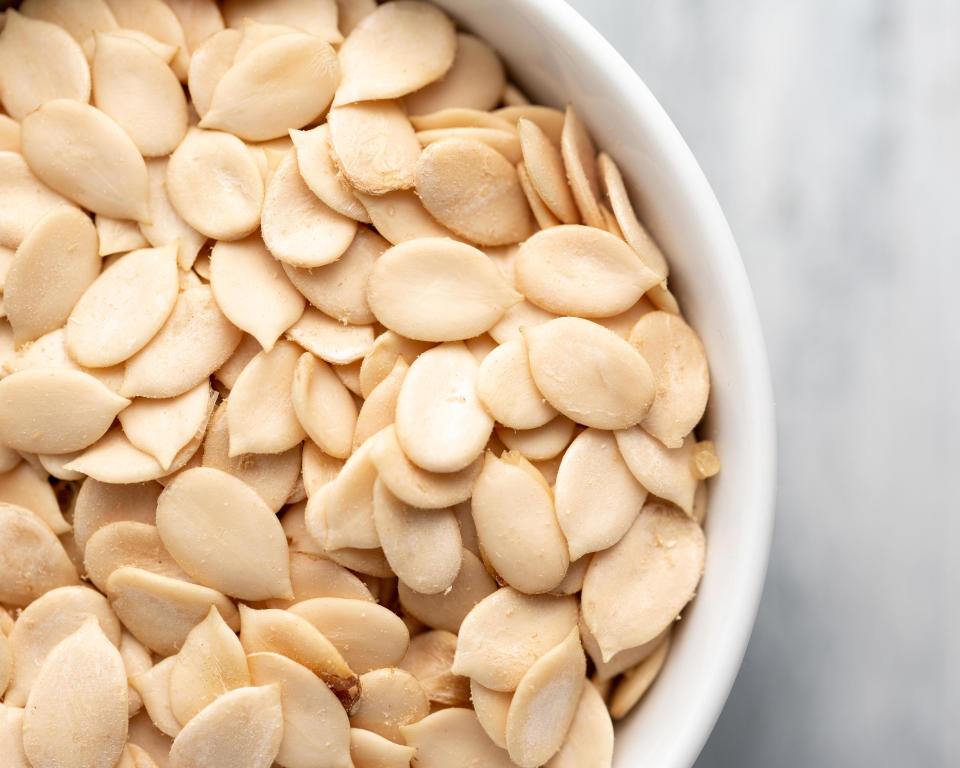What is agushi? This West African staple adds richness to soups and stews
When it comes to West African ingredients, it doesn't get more quintessential than agushi — white melon seeds that are typically ground into soups — also known as agusi, egushi, elegushi or egusi. I recall being in eateries such as Tasty’s in Woolwich, London, where it was being served but being too young to know it or name it. Agushi wasn't something my dad ever cooked with at home when I was growing up.
My first real encounter with agushi was on Ridley Road Market in East London circa 2011. The little plastic bags of this yellow crumbly ingredient — that I thought was breadcrumbs at first — caught my eye. When I opened the bag to smell it, I pulled back quickly but quietly, embarrassed by my ignorance. No one wants to look dumb when buying ingredients they are unfamiliar with, especially not a chef repping Ghanaian cuisine. The strong iron smell didn’t seem particularly appealing.

"Aunty, what is this? What is it used for?" I asked the woman with me. (I had many aunties on Ridley Road which was comforting in the absence of actual blood relatives nearby.)
"Egushi," she told me. "For palava sauce and kontomire! It’s very good for you."
I was in Ghana before I ate or cooked with agushi.
Lamb Palaver by Zoe Adjonyoh
What is agushi?
Agushi is a seed that comes from certain cucurbitaceous plants (like squash, melon and gourd). On its exterior, the small, spherical melons (Cucumeropsis mannii or Mann's cucumeropsis) have alternating streaks of cream and green like a watermelon. The plant looks so similar to a baby watermelon that many botanists have mistaken it for one. But its interior is very different; it’s flat, white seeds resemble pumpkin seeds and, similarly, when uncooked, remain bitter.

When ground, agushi works as an excellent gluten- and dairy-free thickener for stews and soups, adding deep creaminess and nutty notes. Rich in oil and protein, agushi pairs well with meat and seafood. While preparation differs by region and personal preference, agushi stew is a favorite dish in much of West Africa and Nigeria, where it is native and has been cultivated for generations.

How is agushi traditionally used?
A staple in many parts of West Africa, such as Nigeria, Ghana, Liberia, Sierra Leone, Togo and Cameroon, agushi is typically dried and coarsely ground into a flour and used to thicken a variety of soups and stews. Prior to grinding, these seeds are often sun-dried, shelled and sometimes roasted; I prefer to roast mine at home in a little groundnut oil or suya seasoning for some extra punch. In the preparation phase, they can also be soaked, fermented, boiled or sautéed.
Related: The real #FufuChallenge is not eating this glorious dish — it's making it.
While agushi can be eaten raw, its distinctly bitter smell and taste tends to mellow as it is cooked. After preparation, ground seeds can be mixed with water in combination with other ingredients to make a paste that can be added to savory puddings (for example, roasted with peanuts and peppers to accompany eggplant). Agushi can also find its way into steamed dumplings, act as a spread (not so dissimilar from peanut butter), wrapped in leaves to create a seasoning, compacted into meat-substitute patties or cooked on a skillet to enjoy as a puffed snack. In its most popular form, it accompanies spinach, steamed banana leaves, yams, onions or other spices in some iteration of agushi soup.
What are agushi's health benefits?
Popeye would have been even more unstoppable had he known about this ingredient — and it would have complemented his regular intake of spinach, too.
A major source of vitamins, antioxidants, macronutrients and micronutrients, the cholesterol-free food also contains important fatty acids and minerals like potassium, magnesium, iron, phosphorus, zinc and calcium. Rich in vitamin B1 and B2, which can facilitate growth and red blood cell development, vitamin C, which can aid in healthy tissue maintenance, and niacin, which promotes healthy skin, agushi serves as a great meat alternative for those adhering to a vegan or plant-based diet.
It has also been said to help prevent diabetes, regulate lipid levels, heal bacterial infections, facilitate hair growth and lower blood pressure. In herbal medicine, agushi has been used to treat conditions including intestinal disorders, bacterial infections, jaundice, asthma and diabetes.
How can I cook with agushi right now?
Agushi can be served in concert with a variety of dishes: It can accompany pounded yams, fufu or eba (made from cassava), made into Ghanaian Spinach Stew with Sweet Potatoes, Agushi Soup or Nigerian Egusi Soup (sometimes called “palaver (or palava) sauce” when incorporated with boiled yam and molded into a ball served with rice).
Spinach and Agushi Curry by Zoe Adjonyoh
For some other unique twists and takes on this versatile ingredient, be sure to try my recipes for Spinach and Agushi Curry and Lamb Palaver. You can also check out the fantastic egusi-based, ready-meals made by Egunsifoods. And, of course, remember to buy Black when you add this important ingredient to your shopping basket.

